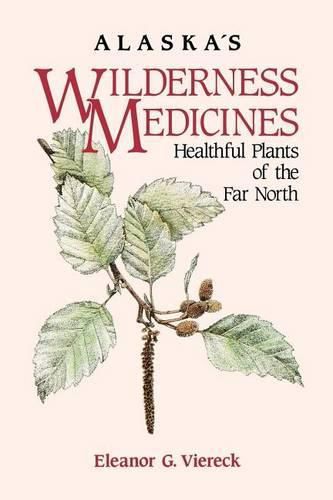Readings Newsletter
Become a Readings Member to make your shopping experience even easier.
Sign in or sign up for free!
You’re not far away from qualifying for FREE standard shipping within Australia
You’ve qualified for FREE standard shipping within Australia
The cart is loading…






This title is printed to order. This book may have been self-published. If so, we cannot guarantee the quality of the content. In the main most books will have gone through the editing process however some may not. We therefore suggest that you be aware of this before ordering this book. If in doubt check either the author or publisher’s details as we are unable to accept any returns unless they are faulty. Please contact us if you have any questions.
Whenever I open it, I find another marvelous tidbit, like Viereck’s description of uses for soft, acidic plant sphagnum, or peat moss, the plant often found chinking the walls of log cabins… - Fairbanks News-MinerThis guide to Alaskan wild plants, native and introduced, is a great way to acquaint people with Alaskan wild plants that can be used to promote health and healing, use for emergency first-aid care, or to maintain wellness. More than fifty plant species are described with information on habitat and distribution as well as general information on how each one can be used as medicine. This natural history of some of Alaska’s medicinal plants is not intended to serve the purpose of a self-care manual of medicine, but rather be useful to persons in cities, on farms, and in the wilderness, whether they are in Alaska for recreation, hunting, fishing. or work. Others, inadvertently stranded as a result of an accident or disaster, may find themselves in need of help from healing plants. Dr. Eleanor G. Viereck presents useful and fascinating information about trees, flowers, and shrubs accompanied by accurately rendered line drawing of the vegetation. There are additional notes on history and folklore, poisonous species that can be easily confused with useful ones, and Dr. Viereck’s experience with the plants. She tells where to find each plant and discusses plant collecting in general and how to brew healthful herb teas. An illustrated glossary, cross-references of therapeutic uses of specific plants, and a thorough bibliography completes this valuable contribution to plant lore.
$9.00 standard shipping within Australia
FREE standard shipping within Australia for orders over $100.00
Express & International shipping calculated at checkout
This title is printed to order. This book may have been self-published. If so, we cannot guarantee the quality of the content. In the main most books will have gone through the editing process however some may not. We therefore suggest that you be aware of this before ordering this book. If in doubt check either the author or publisher’s details as we are unable to accept any returns unless they are faulty. Please contact us if you have any questions.
Whenever I open it, I find another marvelous tidbit, like Viereck’s description of uses for soft, acidic plant sphagnum, or peat moss, the plant often found chinking the walls of log cabins… - Fairbanks News-MinerThis guide to Alaskan wild plants, native and introduced, is a great way to acquaint people with Alaskan wild plants that can be used to promote health and healing, use for emergency first-aid care, or to maintain wellness. More than fifty plant species are described with information on habitat and distribution as well as general information on how each one can be used as medicine. This natural history of some of Alaska’s medicinal plants is not intended to serve the purpose of a self-care manual of medicine, but rather be useful to persons in cities, on farms, and in the wilderness, whether they are in Alaska for recreation, hunting, fishing. or work. Others, inadvertently stranded as a result of an accident or disaster, may find themselves in need of help from healing plants. Dr. Eleanor G. Viereck presents useful and fascinating information about trees, flowers, and shrubs accompanied by accurately rendered line drawing of the vegetation. There are additional notes on history and folklore, poisonous species that can be easily confused with useful ones, and Dr. Viereck’s experience with the plants. She tells where to find each plant and discusses plant collecting in general and how to brew healthful herb teas. An illustrated glossary, cross-references of therapeutic uses of specific plants, and a thorough bibliography completes this valuable contribution to plant lore.